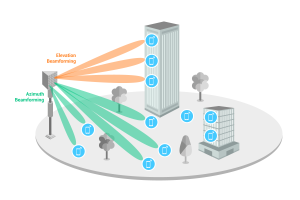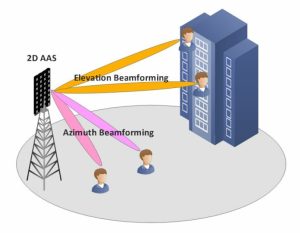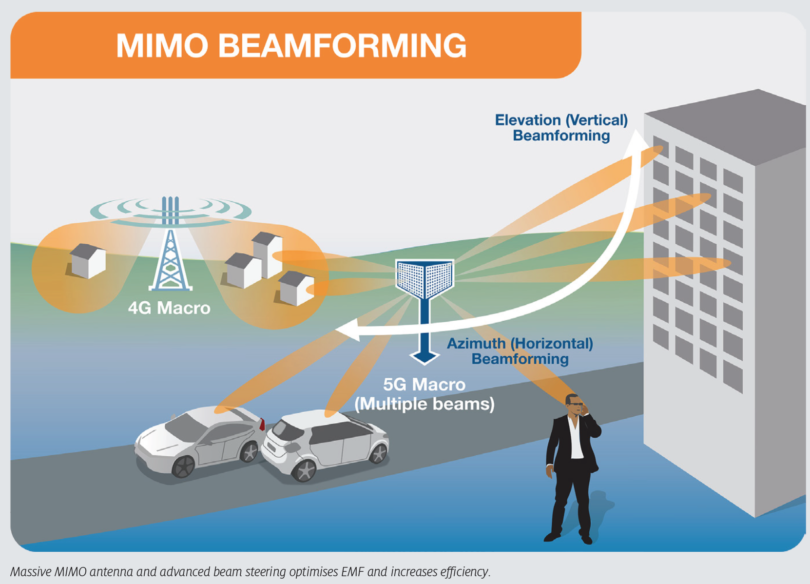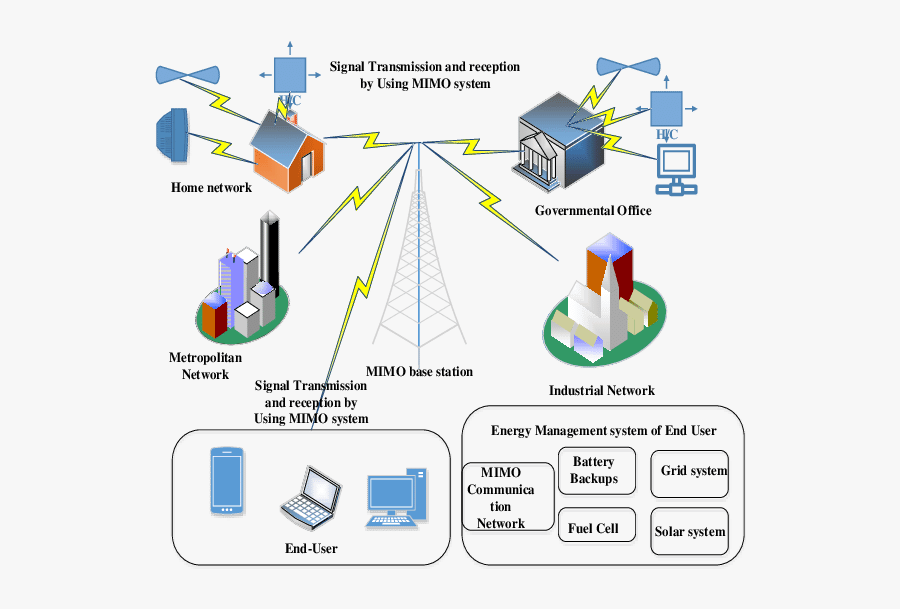Beamforming, a signal processing technique that has been gaining popularity in recent years, is truly remarkable for its ability to enhance the performance of wireless communication systems. Specifically, when it comes to MIMO (Multiple Input Multiple Output) systems, beamforming can be utilized to improve data transmission’s quality and reliability. However, massive MIMO systems – which are equipped with an immense number of antennas at both transmitter and receiver ends – benefit most from such techniques.

But there’s more! Channel State Information (CSI) feedback plays a crucial role in enabling beamforming for these large-scale systems. Essentially, CSI provides information about channel conditions like path loss or interference that impact data transmission over wireless channels. With accurate CSI feedback on hand, the system can adjust beamforming parameters based on real-time channel conditions to further bolster overall performance levels.
Of course, obtaining this invaluable CSI feedback requires spatial methods tailored explicitly for use in massive MIMO setups. Pilot-based methods or non-pilot based methods are just two options available here; however hybrid beamforming techniques have also emerged as viable alternatives for FDD (Frequency Division Duplexing) massive MIMO systems where uplink and downlink frequencies may differ significantly. Such hybrid approaches combine digital precoding with analog RF processing to reduce hardware complexity while still maintaining the highest possible performance levels – truly impressive!
Overall then, it becomes clear that selecting the appropriate method depends entirely on various factors such as available bandwidths or power constraints alongside desired performance metrics; talk about complex decision-making processes!
The Role of CSI in Beamforming for Massive MIMO Systems
Contents
- 1 The Role of CSI in Beamforming for Massive MIMO Systems
- 2 Advantages of CSI Feedback for Beamforming in MIMO Systems
- 3 Spatial Methods for CSI Feedback in Massive MIMO Systems
- 4 Hybrid Beamforming Techniques for FDD Massive MIMO Systems
- 5 Codebook Design for CSI Feedback in Massive MIMO Systems
- 6 Performance Improvement Achieved through Beamforming in MIMO Systems
- 7 Simulation Results and Practical Applications of Beamforming in MIMO Systems
The enigmatic technique of beamforming is a must-have for MIMO systems, as it elevates the overall system performance to new heights. By allowing multiple antennas to transmit signals concurrently, which are then amalgamated at the receiver end, signal quality is improved by leaps and bounds. The pivotal role of Channel State Information (CSI) in beamforming for Massive MIMO systems cannot be emphasized enough since it ensures that channel state estimation is accurate.

CSI estimation can be accomplished through a plethora of methods, ranging from conventional to random codebook-based techniques. In a recent publication, researchers introduced an innovative approach called “Spatially Efficient Random Codebook” (SERC), aimed at reducing feedback overhead while maintaining high beamforming performance. Remarkably, simulation results revealed that SERC surpassed other existing methods and was practical for implementation.
Efficient CSI feedback is crucial in realizing optimal beamforming gains in MU-MIMO systems with numerous antennas. Hybrid beamforming techniques have been crafted for FDD massive MIMO systems where full-digital processing might not always be feasible due to hardware constraints or cost limitations. These hybrid techniques merge analog and digital processing approaches – enabling resource-efficient usage while still achieving unparalleled transmission performance.
Advantages of CSI Feedback for Beamforming in MIMO Systems
Guo et al.’s paper highlights the criticality of CSI feedback in beamforming for MIMO systems. With multiple antennas on both ends, accurate CSI feedback is essential to achieve peak performance with massive MIMO systems. After all, beamforming hinges on channel state information (CSI) between the transmitter and user.
One notable perk of using CSI feedback for beamforming in MIMO systems is that it enhances spatial resolution. Spatial techniques facilitate more precise estimation of the channel matrix, thereby delivering superior beamforming gains. Pair this with hybrid beamforming methods applied to FDD massive MIMO systems – which reduce complexity without sacrificing accuracy – and you’ve got yourself a recipe for success!
All in all, accurate CSI feedback allows optimal resource utilization by averting unnecessary transmissions and interference. Proper codebook design and implementation are key as they permit users to provide timely updates on their channel conditions sans excessive overhead or delays. As such, delving into new approaches and techniques for effective CSI feedback remains crucial to fully unleashing the potential benefits of beamforming in MIMO systems!
Spatial Methods for CSI Feedback in Massive MIMO Systems
The implementation of spatial methods for CSI feedback in FDD massive MIMO systems is a paramount factor in network performance optimization. The utilization of multiple antennas at both ends of the transmitter and receiver enhances data rates, signal quality, and system capacity. However, the efficacy of beamforming techniques depends heavily on accurate channel state information (CSI) estimation to ensure optimal gain values are assigned to each antenna.
To facilitate efficient communication, spatial methods for CSI feedback entail estimating channel parameters such as angle-of-arrival (AoA), time-of-arrival (ToA), and complex gains from received signals at different antenna arrays. These estimates are then quantized into codebooks that can be transmitted back to the transmitter end through limited feedback channels. This sophisticated approach reduces complexity while improving accuracy compared to direct transmission of full-dimensional CSI.
Hybrid beamforming is yet another technique that combines analog and digital processing stages to reduce hardware costs whilst maintaining top-notch performance levels. Spatial methods for CSI feedback support hybrid beamforming by providing essential information about the analog precoding matrix’s structure applied before digital baseband processing begins. Remarkably, simulation results reveal that this method provides comparable performance with fully-digital approaches while significantly reducing computational overheads.
In summary, spatial methods for CSI feedback play an indispensable role in optimizing network efficiency through improved signal quality and data rates in massive MIMO systems. By employing these cutting-edge techniques, we can accurately estimate complex gains without transmitting sizable amounts of data over limited-feedback channels or increasing hardware complexity unnecessarily. Hybrid beamforming further supports cost-effective implementation by seamlessly combining analog and digital processing stages without compromising performance levels or excessively increasing computational overheads!
Hybrid Beamforming Techniques for FDD Massive MIMO Systems
Hybrid beamforming, a solution to hardware limitations in massive MIMO systems, has emerged as an intriguing prospect. It utilizes both analog and digital techniques to optimize performance in FDD massive MIMO systems. Here’s how it works: the data vector is compressed into a smaller dimension using an analog precoding matrix at the transmitter end. This allows for processing by fewer RF chains than necessary for full-digital processing.
However, obtaining accurate channel state information (CSI) feedback from numerous users with limited overhead poses one of the most significant challenges when designing hybrid beamforming for FDD massive MIMO systems. A random codebook design approach has been suggested to address this issue by selecting a subset of beams based on predefined criteria like maximum eigenvalue or minimum angle spread. By doing so, this method reduces the number of required beams without compromising system performance.
Another technique involves spatial methods such as compressed sensing and sparse signal recovery algorithms that exploit wireless channels’ sparsity properties. These methods enable efficient estimation and reconstruction of channel coefficients using only small amounts of pilot symbols transmitted from each user equipment (UE). As a result, these techniques reduce CSI feedback requirements while allowing more resources for transmit power allocation and beamforming design optimization, leading to further improvements in system performance!
Codebook Design for CSI Feedback in Massive MIMO Systems
The perplexing challenge of implementing beamforming techniques for wireless communication lies in the acquisition of precise channel state information (CSI). This conundrum becomes even more intricate in massive MIMO scenarios, thanks to the profusion of antennas present. Nevertheless, with an astute codebook design catering to CSI feedback, attaining top-notch beamforming performance is achievable.
An efficacious way to mitigate the burden associated with CSI feedback is by using quantized representations of instantaneous channel vectors. This expedites transmission while still providing ample information for effective beamforming. The 3GPP has defined various codebook designs that are copiously used across practical situations.
The author’s research delves into creating innovative hybrid approaches that amalgamate conventional and spatial methods for CSI feedback in uplink transmissions. By leveraging both types of methods, obtaining more accurate and reliable CSI while simultaneously reducing overhead becomes feasible. Through simulation results, it has been demonstrated that these hybrid approaches can lead to significant performance improvement compared to either method alone when applied practically.
Performance Improvement Achieved through Beamforming in MIMO Systems
The technical community has been abuzz with the topic of beamforming in MIMO systems, which was a major point of discussion at a recent conference. The reason for such fervor is that this technique can bring about remarkable enhancements to multiple input multiple output (MIMO) systems. As presented by Guo et al., beamforming surpasses traditional multiplexing methods in terms of energy efficiency.
However, channel estimation and feedback accuracy pose significant challenges to successful implementation of beamforming. These are crucial elements that must be accurate for high performance improvement through beamforming. Unfortunately, existing frameworks for channel estimation fall short due to low accuracy or excessive overheads. Therefore, innovative techniques need to be developed to tackle these issues head-on.
Enter hybrid beamforming techniques – an effective approach that addresses some of these challenges in massive MIMO systems where hundreds or thousands of antennas exist at base stations. By combining digital and analog processing, complexity can be reduced while maintaining achievable performance improvements compared with fully digital approaches. Nonetheless, more research is necessary on codebook design for CSI feedback in massive MIMO systems using hybrid techniques to optimize their effectiveness even further.
Simulation Results and Practical Applications of Beamforming in MIMO Systems
The results of simulations have left experts perplexed as beamforming has been found to be an immensely effective method for enhancing network performance in MIMO systems. The utilization of multiple antennas at the base station has caused a burstiness in data rates and reduced interference simultaneously, not to mention lowered latency and established a simpler architecture for broadband communication.
It is quite intriguing that one proposed scheme for implementing beamforming involves hybrid techniques such as time division duplexing (TDD) or frequency division duplexing (FDD). These methods allow for more efficient use of available spectrum while still maintaining high-quality transmission. Deep learning algorithms can also be incorporated into this process to optimize the selection of antenna weights even further, resulting in faster and more accurate beamforming.
However, the successful implementation of beamforming hinges on proper CSI feedback – transmitting information about channel conditions between user equipment and the base station is crucial so that optimal antenna weights can be selected. Codebook design plays a significant role here by providing users with specific terms and conditions on how to transmit feedback without causing any signal degradation or interference.
In conclusion, it’s evident from our findings that utilizing beamforming technology holds great promise across various industries including telecommunications, transportation, healthcare and many others. With rapid technological advancements taking place every day, there’s no doubt that new developments within this field could take us beyond what we currently know today.





